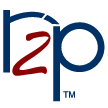NIOSH eNews
In This Issue
- From the Director's Desk: The Long Shadow
- John Howard Appointed Director of NIOSH
- National Academies Releases Prepublication Copy of NIOSH Research Evaluation
- Essential Elements for Risk Management Suggested
- In Memoriam: Paul Baron
- Update on NIOSH Studies Related to Respirator Performance and Airborne Transmission of the H1N1 Virus
- Morbidity and Mortality @ Work
- News from Our Partners: Oklahoma Surveillance Study Examines Burn Injuries Among Roofers
Around NIOSH
- r2p Corner: NIOSH Signs A New Licensing Agreement
- NORA: National Transportation, Warehousing, and Utilities Agenda
- Healthcare and Social Assistance Sector Council Presents State of the Sector
- Draft National Healthcare and Social Assistance Agenda
- NIOSH BLOG: Help NIOSH With The Blog!
- Communication Products: New NIOSH Software Helps Prevent Occupational Hearing Loss in Miners
- NIOSH Report Released on Control Banding
- Call for Abstracts
- Upcoming Conferences & Workshops
- Word of the Month— Control banding
Volume 7 Number 5 September 2009
From the Director's Desk
John Howard, M.D.
Director, NIOSH
September eNews 2009
The Long Shadow
Eight years later, the attack on the World Trade Center continues to cast a long shadow. We honor the men and women who perished in the attack, and we find inspiration in the strength and courage of their families and loved ones.
The observance of 9/11 also reminds the Nation of the dedication and heroism shown by the responders who served at Ground Zero in the aftermath of the catastrophe. We in NIOSH have been privileged to work with the responder community and other partners to address critical occupational safety and health needs that emerged from the tragedy. We are proud that much has been accomplished through this teamwork during the past eight years. We recognize that more remains to be done, and we are committed to further progress.
I invite you to read the new NIOSH Science Blog at /niosh/blog/, which discusses one such area of ongoing partnership. In the 1990s, NIOSH and its stakeholders had already recognized and had begun to address needs for personal protective equipment that would meet the emerging occupational health demands of the 21st Century. 9/11 added even greater urgency to this mission. From the lessons of Ground Zero, the occupational health community identified critical needs relating to the design, availability, use, and maintenance of respirators for responders.
As the federal agency responsible for testing and certifying respirators for workplace use, and for conducting research to advance workplace respiratory protection, NIOSH has followed up with our stakeholders on several fronts to address those needs. Resources about NIOSH’s respirator testing, certification, and research program can be found at /niosh/npptl/topics/respirators/. The NIOSH Science Blog provides further details about those initiatives, and invites your comments.
Concerns continue regarding adverse health effects associated with exposure to the smoke, dust, fumes, and emotionally wrenching conditions of Ground Zero. Since 2001, NIOSH has been privileged to administer federal funds that support the health monitoring and treatment of responders who served at the rescue and recovery site, and of Lower Manhattan residents, cleanup workers and others affected by the WTC disaster . More details about these programs can be found at the NIOSH World Trade Center response page at /niosh/topics/wtc/ and at the World Trade Center Health Registry page at http://nyc.gov/html/doh/wtc/html/registry/registry.shtml.
We have been extremely honored to work closely with Ground Zero responders, recovery and cleanup workers, Lower Manhattan residents, students, school staff and workers, and with their dedicated health providers, to support these vital efforts. More than 51,000 responders, nearly 2,000 community members, and tens of thousands of others have been served through programs funded by the U.S. Department of Health and Human Services. Health monitoring and treatment are crucial for identifying symptoms of illness and psychological trauma, and for designing effective interventions. From knowledge gained through these programs, we also have a means to help us identify trends in the respiratory, gastrointestinal and psychological illnesses among the exposed populations of responders and community members. From this experience, we hope that we can better anticipate the ongoing needs of the populations affected by the WTC Disaster on September 11, 2001 and then take those lessons and apply them to future emergency preparedness and response needs.
Already, a number of studies in the peer-reviewed medical science literature, drawn from the WTC exposure experience, have been published since 2001. These studies can be found at /niosh/topics/wtc/SciSumAllByYear.html. Recently published studies indicate a troubling persistence of respiratory and psychological symptoms and illnesses among the exposed populations. I commend this growing body of literature to you, including the most recent journal articles from the WTC Health Registry, the New York City Fire Department http://www.nyc.gov/html/fdny/html/units/bhs/wtcmm/index.shtml and from the WTC Environmental Health Center of the Health and Hospitals Corporation of New York City http://www.nyc.gov/html/hhc/html/services/wtc-health-center.shtml. These most recent articles are:
- Brackbill, et al, “Asthma and Posttraumatic Stress Symptoms 5 to 6 Years Following Exposure to the World Trade Center Terrorist Attack.” JAMA. 2009;302(5):502-516.
http://jama.ama-assn.org/cgi/content/abstract/302/5/502 - Webber, et al, “Trends in Respiratory Symptoms of Firefighters Exposed to the World Trade Center Disaster: 2001–2005.” Environmental Health Perspectives Volume 117, Number 6, June 2009 http://www.ehponline.org/members/2009/0800291/0800291.html
- Reibman, et al. “Characteristics of a Residential and Working Community With Diverse Exposure to World Trade Center Dust, Gas, and Fumes. Journal of Occupational and Environmental Medicine. 51(5):534-541, May 2009. http://journals.lww.com/joem/Abstract/2009/05000/Characteristics_of_a_Residential_and_Working.3.aspx
Since the World Trade Center Disaster in 2001, NIOSH has been privileged to administer the federal funding for World Trade Center health surveillance, monitoring, and treatment for responders and the community through its annual appropriations. A bill pending in Congress, H.R. 847, titled the James Zadroga 9/11 Health and Compensation Act of 2009, would Congressionally authorize a formal World Trade Center health program in NIOSH. http://thomas.loc.gov/cgi-bin/query/F?c111:1:./temp/~c111DLrS6F:e1916: The legislation is named for Detective James Zadroga of the New York City Police Department, whose death in 2006 greatly heightened public attention to the health concerns of the World Trade Center responders and the community.
As we commemorate the eighth year since the terrible loss on September 11, 2001, I am honored that Secretary Sebelius and Dr. Freidan have given me the opportunity to serve again as the Director of NIOSH, and to resume duties as Coordinator of the Department of Health and Human Services’ World Trade Center Health Programs.
I look forward to working with all of you to continue our important work on behalf of those who suffer, and still suffer, health effects from the World Trade Center Disaster eight years ago.

John Howard Appointed Director of NIOSH
HHS Secretary Kathleen Sebelius announced the selection of John Howard, M.D., as the new director for NIOSH and the coordinator for HHS World Trade Center Health Programs. Dr. Howard previously served as NIOSH director from 2002 through 2008. We thank Dr. Christine M. Branche for her excellent service as Acting Director and welcome Dr. Howard's return. http://www.hhs.gov/news/press/2009pres/09/20090903d.html
National Academies Releases Prepublication Copy of NIOSH Research Evaluation
On August 25, the National Academies released a prepublication copy of the report Evaluating Occupational Health and Safety Research Programs: Framework and Next Steps. The report culminated the process of independent reviews of eight NIOSH research programs. NIOSH will closely review the August 25 report, which discusses lessons learned in the process of evaluating research programs. The prepublication copy of the report is available online from the National Academies at http://www.iom.edu/CMS/3740/28457/72627.aspx.Essential Elements for Risk Management Suggested
Six essential features for proactive management of occupational safety and health risks in emerging industries such as nanotechnology are suggested in an article in the August 2009 issue of Nature Nanotechnology.The authors are Vladimir Murashov, Ph.D., Special Assistant to the NIOSH Director, and John Howard, M.D., former NIOSH Director. http://www.nature.com/nnano/journal/v4/n8/full/nnano.2009.205.html.
In Memoriam: Paul Baron
NIOSH is saddened to learn of the passing of Dr. Paul Baron on May 20, 2009, at his residence in Cincinnati, Ohio, after a long battle with cancer. Paul worked at NIOSH for 30 years until his retirement in 2004. He was a leading scholar in aerosol science and occupational health research. To read an extensive list of Dr. Baron’s many accomplishments, go to doi:10.1016/j.jaerosci.2009.06.007.
Update on NIOSH Studies Related to Respirator Performance and Airborne Transmission of the H1N1 Virus
On August 11–13, NIOSH researchers participated in the Institute of Medicine (IOM) workshop on personal protective equipment for healthcare workers potentially exposed on the job to the H1N1 virus. The researchers described current scientific results and details of ongoing NIOSH studies on the key issues of respirator performance and airborne transmission of the virus. The IOM committee will make recommendations to CDC and OSHA. The NIOSH presentations and other workshop materials are posted at http://www.iom.edu/CMS/3740/71769/71867.aspx.
Global Happenings
NIOSH’s global leadership and international teamwork in research on nanotechnology safety and health are reflected in three new reports from the Organization for Economic Cooperation and Development (OECD). For links to these reports, see “Nanotechnology Spotlights” on the NIOSH Topic Page: Nanotechnology at /niosh/topics/nanotech/.
NIOSH Seeks Comments on the Following:
Draft Construction Program Plan, to implement the National Academies’ program evaluation recommendations. Deadline for comments is September 25, 2009. /niosh/review/public/182/.
Draft Traumatic Injury Program Plan, to implement the National Academies’ program evaluation recommendations. Deadline for comments is September 25, 2009. /niosh/review/public/181/.
Three NIOSH Analytical Methods, related to measuring methamphetamine or other illicit drugs via three different techniques. Deadline for comments is September 30, 2009. /niosh/review/public/176/, /niosh/review/public/177/, /niosh/review/public/178/.
Quality Assurance Requirements for Respirators, petition to change a regulation that specifies when a warning device on a respirator must give an alarm that the air supply in the oxygen tank is being depleted. Deadline for comments is October 9, 2009. http://edocket.access.gpo.gov/2009/E9-11947.htm.
Draft Health Hazard Evaluation Program Plan, to implement the National Academies’ program evaluation recommendations. Deadline for comments is September 30, 2009. /niosh/review/public/185/.
Draft Air-fed Ensembles Concept Paper, to update or create portions of Title 42 Code of Federal Regulations Part 84 (42 CFR Part 84) to promote improved performance and reliability of air-fed ensembles (AFE). Deadline for comments is October 19, 2009. /niosh/review/public/148A/.
Draft Concept Paper for Total Inward Leakage, to update portions of Title 42 Code of Federal Regulations Part 84 (42 CFR Part 84) to promote improved performance and reliability in the area of total inward leakage for respirators other than filtering facepieces and half-masks. Deadline for comments is October 19, 2009. /niosh/review/public/168/.
Morbidity and Mortality @ Work
Workplace suicides rose from 196 cases in 2007 to 251 cases in 2008, an increase of 28% and the highestnumber ever reported by the U.S. Bureau of Labor Statistics’ Census of Fatal Occupational Injuries (CFOI). Because suicidal behavior is generally multicausal in nature, determining the motivation for suicidal behavior is extremely challenging. Data such as those reported by CFOI can serve as the basis for further research to address such challenges. For more information, see An Analysis of Workplace Suicides, 1992–2001 by Stephen Pegula at http://www.bls.gov/opub/cwc/sh20040126ar01p1.htm. For more details, see the chart at /niosh/enews/enewsv7n5chart.html.
News from Our Partners
Oklahoma Surveillance Study Examines Burn Injuries Among Roofers
A new study by the Oklahoma Occupational Surveillance Project of the Oklahoma State Department of Health examined burn injuries among roofers, using data collected from Oklahoma burn centers and the Office of the Chief Medical Examiner. The study revealed that 7% of serious work-related burn injuries and deaths occurred among roofers. A new report and fact sheet, based on these findings, were released which provide information on the risks to roofers and safety recommendations for roofers and their employers to help avoid injury. These materials are available at http://www.ok.gov/health/documents/IU_Roofer_Burns.pdf and http://www.ok.gov/health/documents/FS_Roofer_Burns.pdf.
r2p Corner
 NIOSH Signs A New Licensing Agreement
NIOSH Signs A New Licensing Agreement
NIOSH signed a new licensing agreement with Micro Fresh Filters to manufacture a new NIOSH invention—a diesel particulate detection system to measure engine emissions. The system is comprised of a sampling pump and special disposable filters to determine levels of air particles in engine exhausts. The technology is designed to be used to improve diesel exhaust controls. Mention of a company name does not constitute a NIOSH commercial endorsement. For more information, contact Kathleen Goedel at Kgoedel@cdc.gov or go to
/niosh/mining/pubs/pdfs/fmodp.pdf.
NORA
National Transportation, Warehousing, and Utilities Agenda
The National Transportation, Warehousing, and Utilities Agenda is now available at /niosh/nora/. The agenda highlights research and partnership needs in four strategic areas to improve the safety and health of more than 7 million workers. Contact the NORA coordinator (noracoordinator@cdc.gov) with any questions or suggestions or to join others to work on these goals.
Healthcare and Social Assistance Sector Council Presents State of the Sector
The Healthcare and Social Assistance Sector Council released the State of the Sector—Healthcare and Social Assistance: Identification of Research Opportunities for the Next Decade of NORA (/niosh/docs/2009-139/), which provides information on the Healthcare and Social Assistance Sector in terms of magnitude and consequences of known and emerging health and safety problems, critical research gaps, and future research needs. Also released as separate publications are the executive summary (/niosh/docs/2009-138/) and fact sheet (/niosh/docs/2009-149/pdfs/2009-149.pdf).
Draft National Healthcare and Social Assistance Agenda
The NORA Healthcare and Social Assistance Sector Council requests comments on the draft national agenda (/niosh/review/public/183/), which consists of five strategic goals drawn from the larger set of research needs contained in the newly released State of the Sector document announced above. The Council also seeks organizations to join partnership efforts to advance the draft priorities. For more information, contact the NORA coordinator (noracoordinator@cdc.gov).
NIOSH BLOG
Help NIOSH With The Blog!
When you visit the NIOSH blog this month you may be asked to answer a short survey. We are currently evaluating the NIOSH blog, and we hope you will take a couple minutes to answer the questions in order to help us to continue to meet the needs of our readers. If you have any questions, please contact Virginia Sublet vsublet@cdc.gov.
Communication Products
New NIOSH Software Helps Prevent Occupational Hearing Loss in Miners
NIOSH’s new analysis software, Determination of Sound Exposures (DOSES), helps mine operators and miners better identify and control sources of potentially harmful noise by recording miners’ movements with noise levels experienced over the work shift. /niosh/mining/pubs/pubreference/outputid3260.htm
NIOSH Report Released on Control Banding
A new NIOSH report reviews the published literature on “control banding,” describes potential control-banding strategies, and suggests areas where additional research is needed. /niosh/docs/2009-152/
More…
To see other new NIOSH communication products, including documents and topic pages, go to the NIOSH “What’s New” page. /niosh/whatsnew/
Call for Abstracts
American Industrial Hygiene Conference and Exposition 2010 (AIHce): New Frontiers In Science and Practice
Call for presentations, posters, and programs. Deadline for submission is October 5, 2009. www.AIHce2010.org
NIOSH and International Journal of Occupational and Environmental Health
Call for papers on nanotechnology exposure assessment. Deadline for submission is January 15, 2010.
http://www.ijoeh.com/index.php/ijoeh/information/callforpapers
Upcoming Conferences & Workshops
NIOSH to Convene Nanotechnology Workshop
NIOSH and other co-sponsors will convene a conference in July 2010 in Colorado to identify gaps in information and to address questions focusing on occupational health surveillance, exposure registries, and epidemiologic research involving nanotechnology workers. /niosh/topics/nanotech/NanoConfJuly2010.html
A comprehensive list of upcoming conferences can be found at /niosh/exhibits.html.
Word of the Month
Control banding—a strategy to assess and control occupational exposures to chemicals for which no occupational exposure limits exist.
Please send your comments and suggestions to us at nioshenews@cdc.gov.
This newsletter is published monthly via email by the National Institute for Occupational Safety and Health to inform members of the public health community as well as interested members of the general public of Institute related news, new publications, and updates on existing programs and initiatives.
- Page last reviewed: September 10, 2009
- Page last updated: September 10, 2009
- Content source:
- National Institute for Occupational Safety and Health (NIOSH) Office of the Director


 ShareCompartir
ShareCompartir